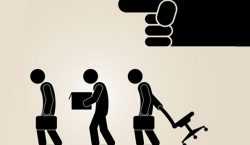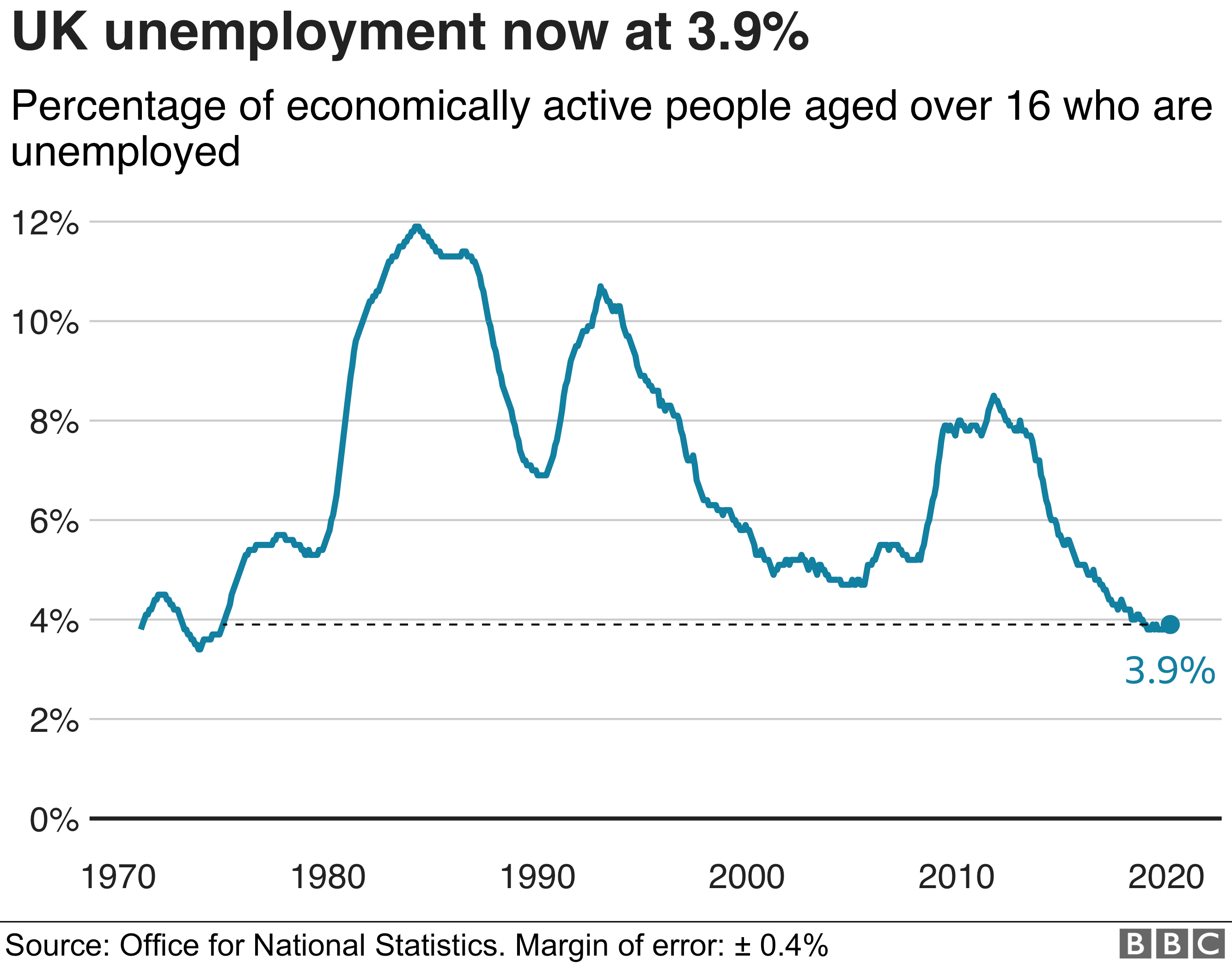

The number of workers on UK payrolls dived more than 600,000 between March and May, official figures suggest.
Meanwhile, the number of people claiming work-related benefits – which includes the unemployed – was up 126% to 2.8 million.
The early estimates reflect the impact of around six weeks of lockdown in which large parts of the UK were shut.
But economists say the full effect on employment will not be felt until wage support schemes end in October.
“The slowdown in the economy is now visibly hitting the labour market, especially in terms of hours worked,” said Jonathan Athow, deputy national statistician for economic statistics at the Office for National Statistics (ONS).”
Frances O’Grady, secretary-general of the Trades Union Congress, said the labour market was “on red alert”.
“We need strong action now to stop lasting economic damage,” she added.
Separate figures published by HMRC on Tuesday showed that a total of 9.1 million workers are having their wages paid through the government’s furlough scheme – more than a quarter of the workforce.
Overall, the official UK unemployment rate for the three months to April held steady at 3.9% as the massive state wage support in place stopped job losses.
Reflecting that, the ONS said the total number of weekly hours worked in the period dropped to 959.9 million – down by a record 94.2 million, or 9%, on the previous year.
However, the agency said that early estimates from the Pay As You Earn (PAYE) system showed that the number of payroll employees fell by 612,000, or 2.1% , between March and May.
And it said there had been a record fall in job vacancies in that period to 476,000 – down 342,000 from the previous quarter – hinting at worse to come.

Capital Economics economist Ruth Gregory said it was “abundantly clear” that the labour market had weakened dramatically.
“Some of this will surely start to filter through into the actual unemployment figures as the government’s job furlough scheme is wound down from August.”
Tej Parikh, chief economist at the Institute of Directors, agreed: “The furlough scheme continues to hold off the bulk of job losses, but unemployment is likely to surge in the months ahead.”
Yael Selfin, chief economist at KPMG UK, warned that many businesses were expected to bring only part of their furloughed workforce back, while they sought to tentatively reopen after the lockdown.
“Hiring new workers is also likely to be put on hold for some time,” she said.

Kayleigh Rennix has never struggled to find work before. The HR manager from Essex was earning close to £40,000 working in the education sector before she resigned in March, fearing her role was at risk.
Since then she’s applied for dozens of jobs, but has had little interest from employers.
“As my leaving date approached, coronavirus reared its ugly head. I would say I’ve applied for more than 100 jobs and not had many call-backs,” she says.
Now the 34-year-old has found herself relying on benefit payments for the first time in her life, and expects to move back in with her parents when her tenancy expires later in the summer.
Some economists believe unemployment could hit 10% – a rate not since since the mid-1990s – as social distancing rules remain in place and consumers curb their spending.
The Institute of Employment Studies (IES), an apolitical think tank, pointed out that the number of claims for work benefits had risen 1.6 million since March – a rate faster, it says, than during the Great Depression of 1929.
At the same time, it says there are eight unemployed people are chasing every job vacancy in the UK – up from just two before the crisis.
“It’s clear too that this crisis is hitting many poorer areas hardest – with coastal towns and ex-industrial areas seeing particularly big increases in unemployment,” said director Tony Wilson. – bbc.com